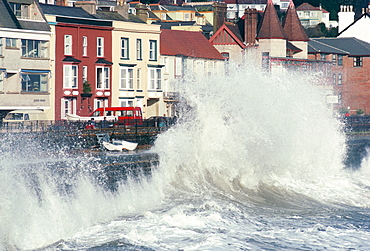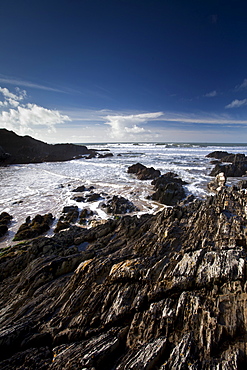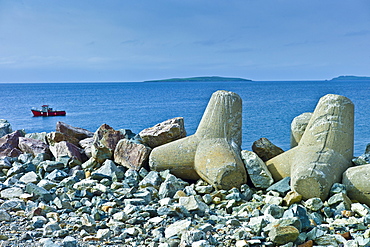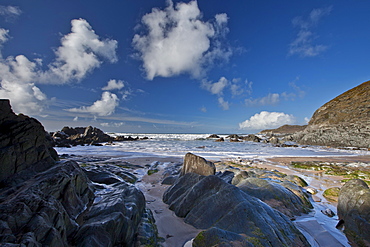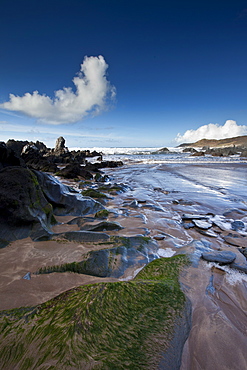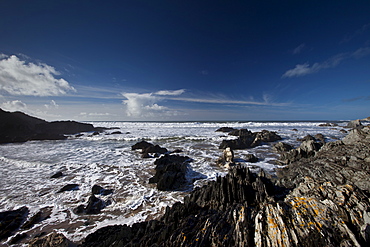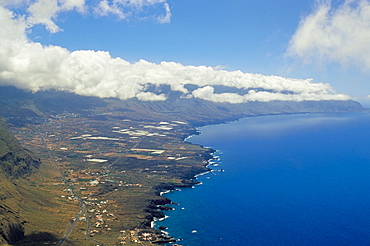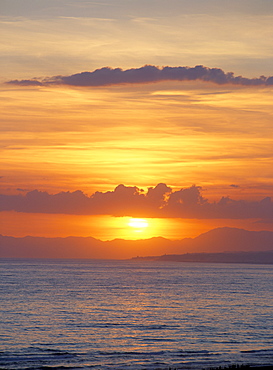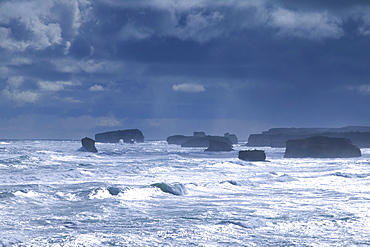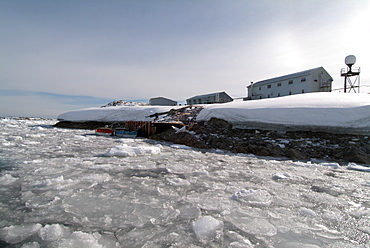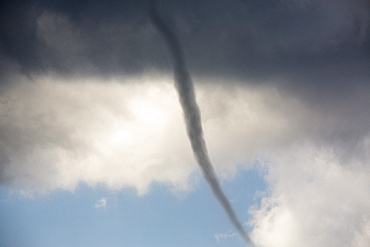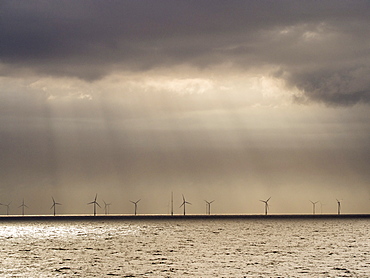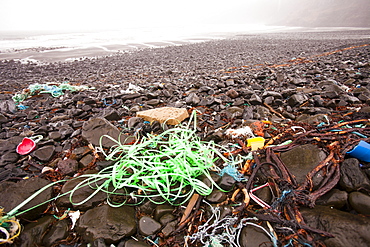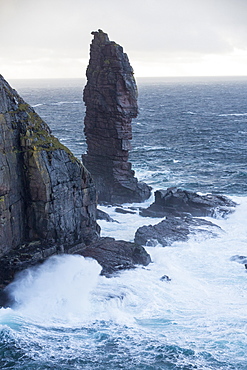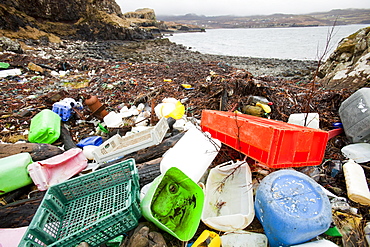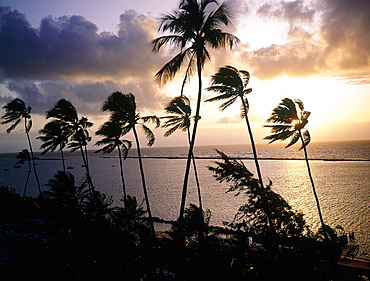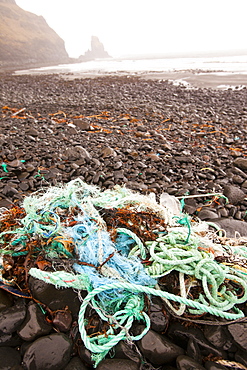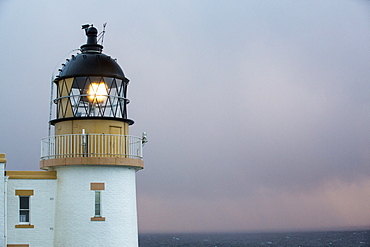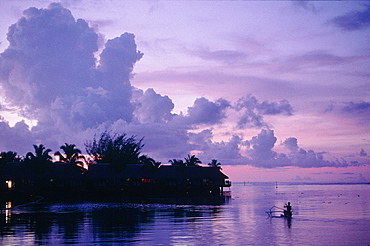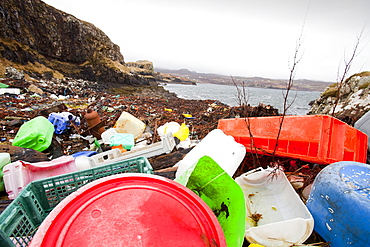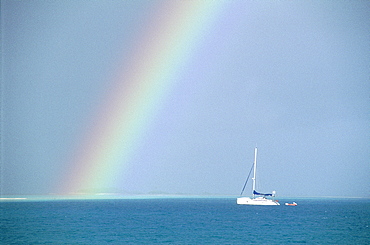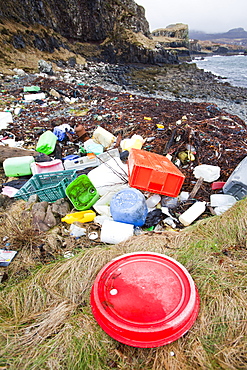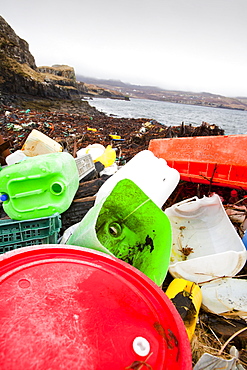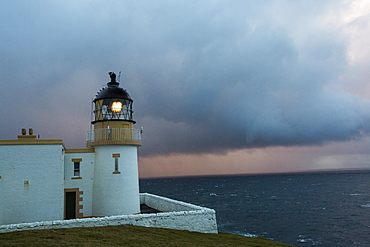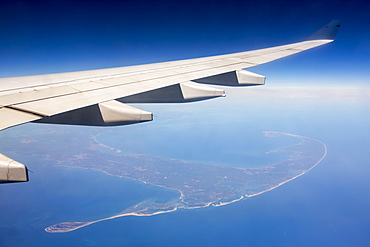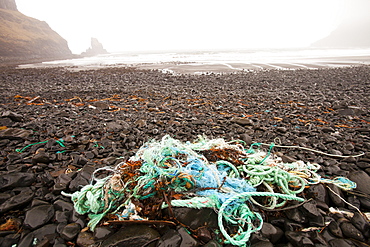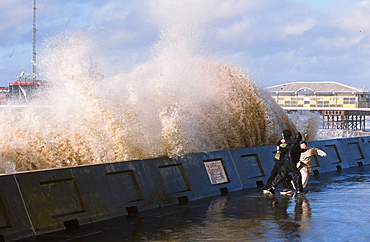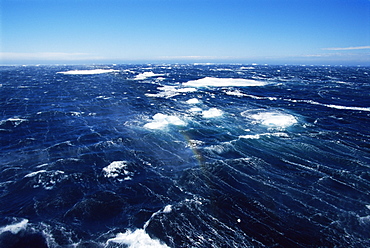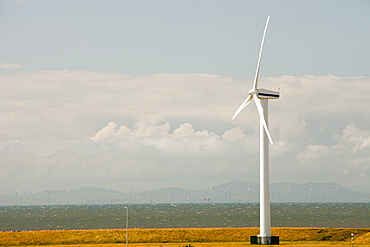Results
« Previous 1 2 3 4
318 results found
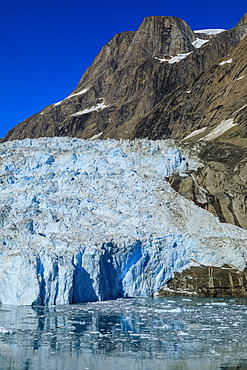
Tidewater glacier, South Skjoldungen Fjord, glorious weather, remote South East Greenland, Denmark, Polar Regions

Blue iceberg, pyramidal peaks, glacier, rugged South Skjoldungen Fjord and Island, glorious weather, remote East Greenland, Denmark, Polar Regions
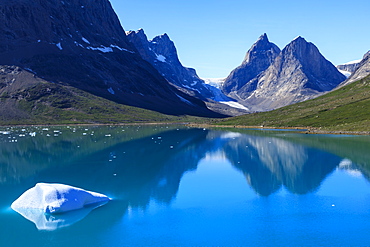
Iceberg, pyramidal peaks, reflections, blue green waters, South Skjoldungen Fjord, glorious weather, remote South East Greenland, Denmark, Polar Regions
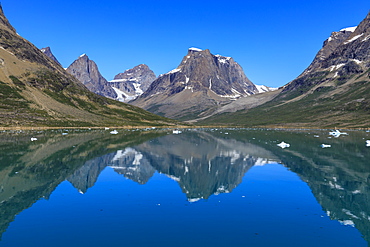
Reflections, beautiful mountains, rugged South Skjoldungen Fjord and Island, glorious weather, remote South East Greenland, Denmark, Polar Regions
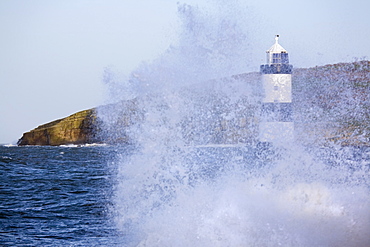
Penmon Point Lighthouse, built in 1838 at the northern entrance to the Menai Strait, and Puffin Island, with rough sea at high tide in winter, Penmon, Anglesey, Wales, United Kingdom, Europe
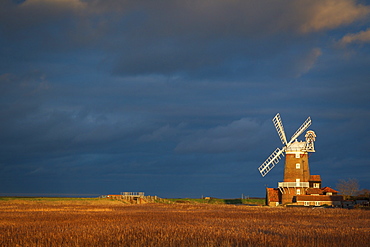
Storm clouds move in over the reedbeds towards Cley Windmill at Cley Next the Sea, Norfolk, England, United Kingdom, Europe
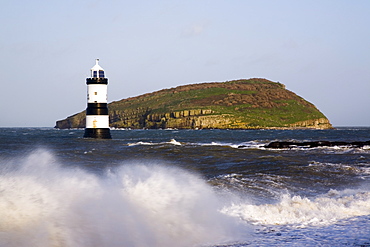
Penmon Point Lighthouse, built in 1838 at the northern entrance to the Menai Strait, and Puffin Island, with rough sea at high tide in winter, Penmon, Anglesey, Wales, United Kingdom, Europe

View of Chicago skyline and rainbow from North Shore, Chicago, Illinois, United States of America, North America
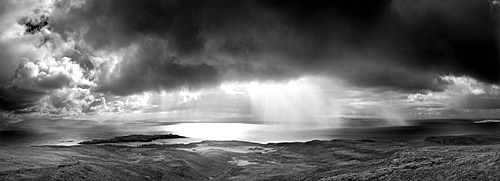
Panoramic view from An Sgurr on the Isle of Eigg, looking towards a storm over the sea between Eigg and the mainland, Highland, Scotland, United Kingdom, Europe

Humpback Whales (Megaptera novaeangliae) feeding on Krill in Wilhelmena Bay, Antarctic Peninsular and surfacing wth a metre of a zodiak. The whales migrate here in the summer to feed on the Krill. Krill numbers have declined by over 50%. They feed on algae that grows on the underside of sea ice, As the sea ice melts, both algae and krill decline. This shot has penguins resting on an iceberg in the background.
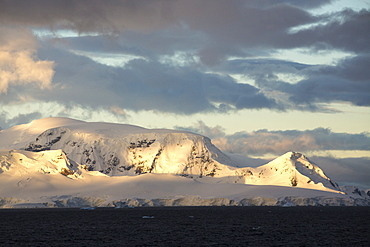
Light on mountainous scenery in Graham Land in Wilhelmina Bay on the Antarctic Peninsular, which is one of the fastest warming places on the planet.
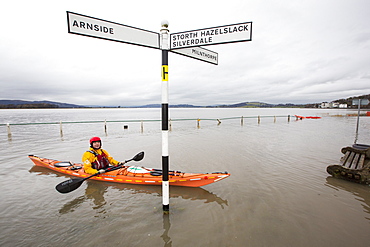
Kayakers in the flood waters on the road at Storth on the Kent Estuary in Cumbria, UK, during the January 2014 storm surge and high tides.
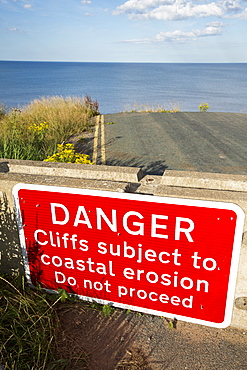
A collapsed coastal road near Skipsea on Yorkshires East Coast, UK. The coast is composed of soft boulder clays, very vulnerable to coastal erosion. This sectiion of coast has been eroding since Roman times, with many villages having disappeared into the sea, and is the fastest eroding coast in Europe. Climate change is speeding up the erosion, with sea level rise, increased stormy weather and increased heavy rainfall events, all playing their part.

A motorist travels through flood waters on the road at Storth on the Kent Estuary in Cumbria, UK, during the January 2014 storm surge and high tides.
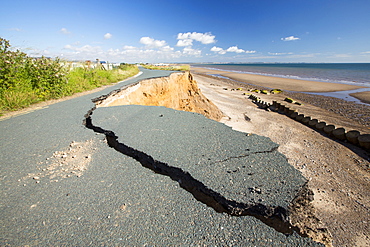
A collapsed coastal road at between Skipsea and Ulrome on Yorkshires East Coast, near Skipsea, UK. The coast is composed of soft boulder clays, very vulnerable to coastal erosion. This sectiion of coast has been eroding since Roman times, with many villages having disappeared into the sea, and is the fastest eroding coast in Europe. Climate change is speeding up the erosion, with sea level rise, increased stormy weather and increased heavy rainfall events, all palying their part.
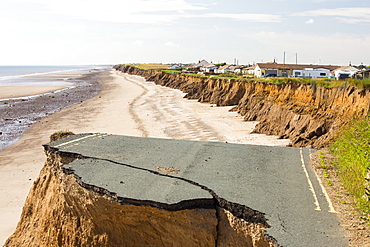
A collapsed coastal road at between Skipsea and Ulrome on Yorkshires East Coast, near Skipsea, UK. The coast is composed of soft boulder clays, very vulnerable to coastal erosion. This sectiion of coast has been eroding since Roman times, with many villages having disappeared into the sea, and is the fastest eroding coast in Europe. Climate change is speeding up the erosion, with sea level rise, increased stormy weather and increased heavy rainfall events, all palying their part.
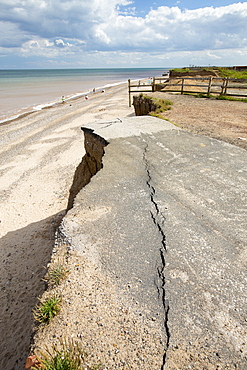
A collapsed coastal road at Easingotn on Yorkshires East Coast, near Skipsea, UK. The coast is composed of soft boulder clays, very vulnerable to coastal erosion. This sectiion of coast has been eroding since Roman times, with many villages having disappeared into the sea, and is the fastest eroding coast in Europe. Climate change is speeding up the erosion, with sea level rise, increased stormy weather and increased heavy rainfall events, all palying their part.
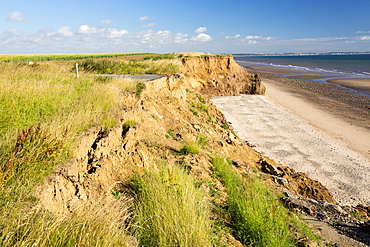
A collapsed coastal road at near Aldbrough on Yorkshires East Coast, near Skipsea, UK. The coast is composed of soft boulder clays, very vulnerable to coastal erosion. This sectiion of coast has been eroding since Roman times, with many villages having disappeared into the sea, and is the fastest eroding coast in Europe. Climate change is speeding up the erosion, with sea level rise, increased stormy weather and increased heavy rainfall events, all palying their part.

Concrete sea defences at Beach Bank Caravan Park in Ulrome near Skipsea on Yorkshires East Coast, UK. The coast is composed of soft boulder clays, very vulnerable to coastal erosion. This section of coast has been eroding since Roman times, with many villages having disappeared into the sea, and is the fastest eroding coast in Europe. Climate change is speeding up the erosion, with sea level rise, increased stormy weather and increased heavy rainfall events, all playing their part.
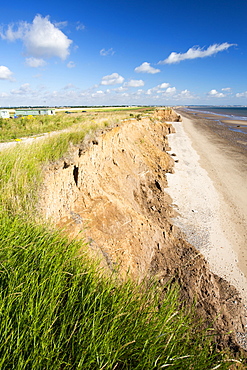
A collapsed coastal road at between Skipsea and Ulrome on Yorkshires East Coast, near Skipsea, UK. The coast is composed of soft boulder clays, very vulnerable to coastal erosion. This sectiion of coast has been eroding since Roman times, with many villages having disappeared into the sea, and is the fastest eroding coast in Europe. Climate change is speeding up the erosion, with sea level rise, increased stormy weather and increased heavy rainfall events, all palying their part.
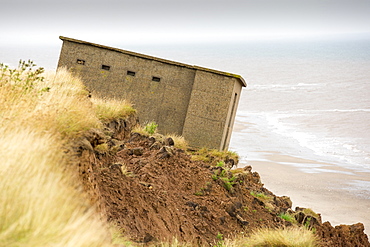
A Second world War lookout post leaning alarmingly and about to tumble over the edge of the cliff near Aldbrough on Yorkshires East Coast, UK. The coast is composed of soft boulder clays, very vulnerable to coastal erosion. This section of coast has been eroding since Roman times, with many villages having disappeared into the sea, and is the fastest eroding coast in Europe. Climate change is speeding up the erosion, with sea level rise, increased stormy weather and increased heavy rainfall events, all playing their part.
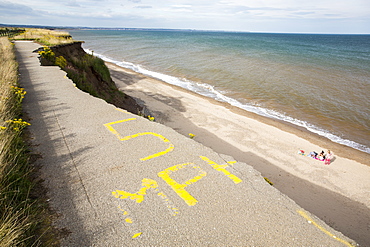
A collapsed coastal road at Barmston on Yorkshires East Coast, near Skipsea, UK. The coast is composed of soft boulder clays, very vulnerable to coastal erosion. This sectiion of coast has been eroding since Roman times, with many villages having disappeared into the sea, and is the fastest eroding coast in Europe. Climate change is speeding up the erosion, with sea level rise, increased stormy weather and increased heavy rainfall events, all palying their part.

The Thames barrier on the River Thames in London. It was constructed to protect the capital city from storm surge flooding. Recent predictions show it will probably be redundant in around twenty years due to increased stormy weather and sea level rise driven by climate change.

The Thames barrier on the River Thames in London. It was constructed to protect the capital city from storm surge flooding. Recent predictions show it will probably be redundant in around twenty years due to increased stormy weather and sea level rise driven by climate change.
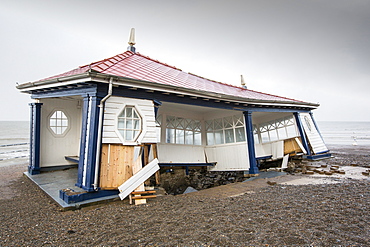
After a week of high tides, storm surges and storm force winds, the sea front promenade of Aberystwyth in Wales has been devastated, with millions of £'s of damage. The crsahing waves punched a large hole in the sea wall and has collapsed Aberystwyth's iconic, Victorian promenade shelter, which has stood for over 100 years. This picture was taken on Wednesday 8th January, 2014, the day the council started to try and clear the thousands of tonnes of beach rubble off the sea front road.

Humpback Whales (Megaptera novaeangliae) feeding on Krill in Wilhelmena Bay, Antarctic Peninsular. The whales migrate here in the summer to feed on the Krill. Krill numbers have declined by over 50%. They feed on algae that grows on the underside of sea ice, As the sea ice melts, both algae and krill decline. An expedition cruise ship in the background

Humpback Whales (Megaptera novaeangliae) feeding on Krill in Wilhelmena Bay, Antarctic Peninsular. With passengers from an expedition crusie in Zodiaks. The whales migrate here in the summer to feed on the Krill. Krill numbers have declined by over 50%. They feed on algae that grows on the underside of sea ice, As the sea ice melts, both algae and krill decline.
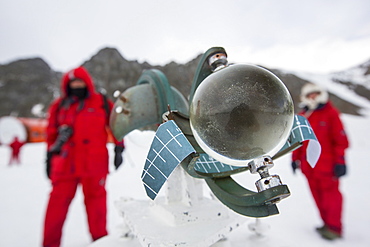
A Campbell Stokes Sunshine Recorder, which measures hours of sunlight at Base Orcadas, which is an Argentine scientific station in Antarctica, and the oldest of the stations in Antarctica still in operation. It is located on Laurie Island, one of the South Orkney Islands, just off the Antarctic Peninsular. The Antarctic Peninsular is one of the fastest warming places on the planet.
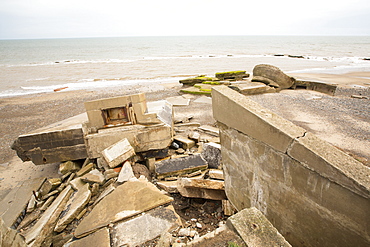
The Remains of the Godwin battery on the beach at Kilnsea at the head of Spurn point on Yorkshires East Coast, UK. Initially constructed during the First World War, the Godwin Battery was added to during the Second World War. It comprised of gun emplacements, search light, barracks, officers’ mess, and a hospital. This section of coastline is the fastest eroding coastline in Europe. The soft boulder clay cliffs are easily eroded and have been eroding since Roman Times, but recently the climate change impacts of increased stormy weather, increased heavy rainfall events and sea level rise have accelerated the rate of erosion. The average rate of attrition is 1.5metres per year, last year it was 5 metres.

Humpback Whales (Megaptera novaeangliae) feeding on Krill in Wilhelmena Bay, Antarctic Peninsular. The whales migrate here in the summer to feed on the Krill. Krill numbers have declined by over 50%. They feed on algae that grows on the underside of sea ice, As the sea ice melts, both algae and krill decline.
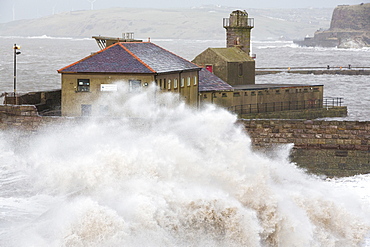
Whitehaven harbour during the January 2014 period of storm surge, high tides and storm force winds. The coastline took a battering, damaging the harbour wall and eroding a large section of coastal cliff.
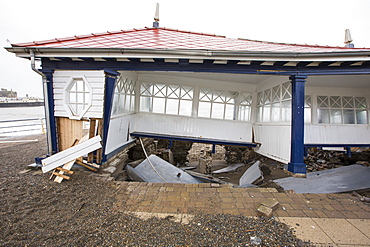
After a week of high tides, storm surges and storm force winds, the sea front promenade of Aberystwyth in Wales has been devastated, with millions of £'s of damage. The crsahing waves punched a large hole in the sea wall and has collapsed Aberystwyth's iconic, Victorian promenade shelter, which has stood for over 100 years. This picture was taken on Wednesday 8th January, 2014, the day the council started to try and clear the thousands of tonnes of beach rubble off the sea front road.
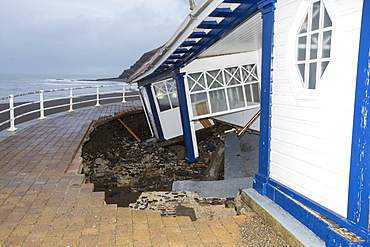
After a week of high tides, storm surges and storm force winds, the sea front promenade of Aberystwyth in Wales has been devastated, with millions of £'s of damage. The crsahing waves punched a large hole in the sea wall and has collapsed Aberystwyth's iconic, Victorian promenade shelter, which has stood for over 100 years. This picture was taken on Wednesday 8th January, 2014, the day the council started to try and clear the thousands of tonnes of beach rubble off the sea front road.
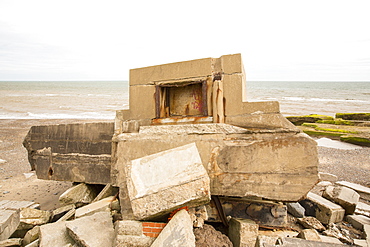
The Remains of the Godwin battery on the beach at Kilnsea at the head of Spurn point on Yorkshires East Coast, UK. Initially constructed during the First World War, the Godwin Battery was added to during the Second World War. It comprised of gun emplacements, search light, barracks, officers’ mess, and a hospital. This section of coastline is the fastest eroding coastline in Europe. The soft boulder clay cliffs are easily eroded and have been eroding since Roman Times, but recently the climate change impacts of increased stormy weather, increased heavy rainfall events and sea level rise have accelerated the rate of erosion. The average rate of attrition is 1.5metres per year, last year it was 5 metres.

The Thames barrier on the River Thames in London. It was constructed to protect the capital city from storm surge flooding. Recent predictions show it will probably be redundant in around twenty years due to increased stormy weather and sea level rise driven by climate change.
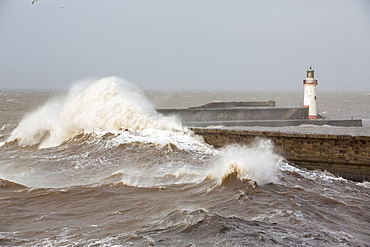
Whitehaven harbour being completely overwhelmed by huge waves during the January 2014 period of storm surge, high tides and storm force winds. The coastline took a battering, damaging the harbour wall and eroding a large section of coastal cliff.

A motorist travels far too fast through flood waters on the road at Storth on the Kent Estuary in Cumbria, UK, during the January 2014 storm surge and high tides.

A motorist stuck in flood waters on the road at Storth on the Kent Estuary in Cumbria, UK, during the January 2014 storm surge and high tides, is pushed out by two helpers.
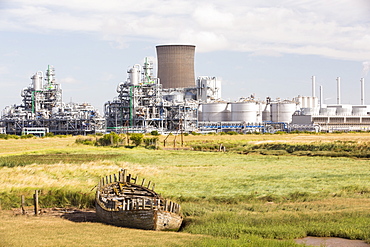
A BP chemical plant at salt End on Humberside which produces Acetic Acid and a gas fired power station It is vulnerable to coastal flooding, and although sea defences were constructed some years ago, climate change driven sea level rise and increased stromy weather, leaves it vulnerable to inundation.
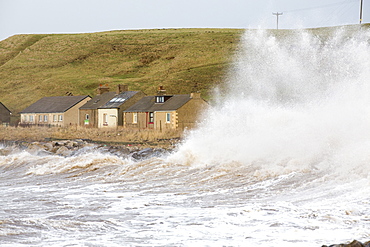
Waves crashing off Parton near Whitehaven during the January 2014 period of storm surge, high tides and storm force winds. The coastline took a battering, damaging the harbour wall and eroding a large section of coastal cliff.
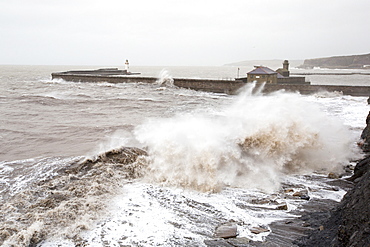
Whitehaven harbour during the January 2014 period of storm surge, high tides and storm force winds. The coastline took a battering, damaging the harbour wall and eroding a large section of coastal cliff.
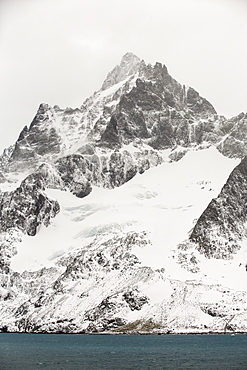
Rugged mountainous scenery Larson Harbour, off Drygalski fjord on the South East tip of South Georgia, in the Southern Ocean.

King Penguins head out to sea on a fishing trip past ice at Gold Harbour, South Georgia, Southern Ocean.

King Penguins in the world's second largest King Penguin colony on Salisbury Plain, South Georgia, Southern Ocean.

France, Normandy, Manche (50), Cherbourg, Jogger Passing By The Sea Front Promenade, Boats At Rear, Rainy Weather

Highly built up beach front areas, just north of Atlantic City that are very vulnerable to sea level rise, USA.
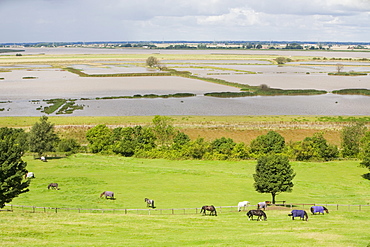
The Breach at Alkborough created in the sea defences to allow sea water to flood agricultural land and create a wetland for wildlife, Humber Estuary, Humberside, England, United Kingdom, Europe
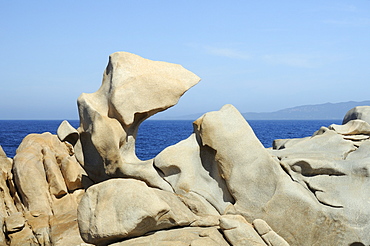
Granite rocks smoothed and sculpted by wind, weather and the sea into strange organic shapes, Campomoro Point, near Propriano, Corsica, France.
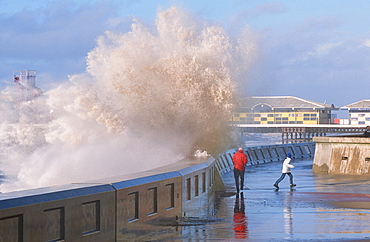
People dodging storm waves breaking over the sea wall at Blackpool, Lancashire, England, United Kingdom, Europe

The snout of the Eqip Sermia glacier at Camp Victor north of Ilulissat on Greenland's west coast, Polar Regions
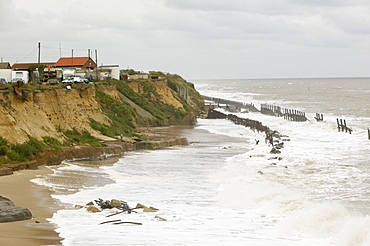
Waves crashing against sea defences at Happisburgh on the fastest eroding section of the UK coast, Norfolk, England, United Kingdom, Europe
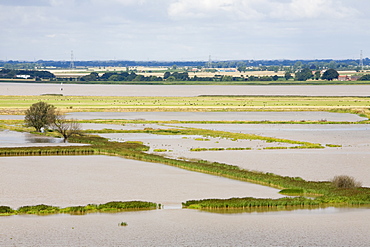
The Breach at Alkborough created in the sea defences to allow sea water to flood agricultural land and create a wetland for wildlife, Humber Estuary, Humberside, England, United Kingdom, Europe



